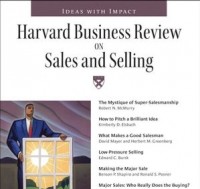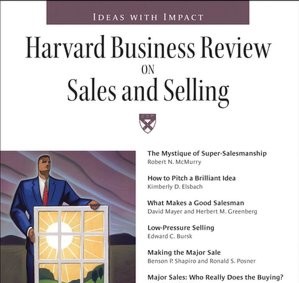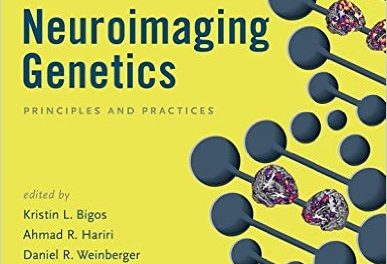
Authors: Thomas V. Bonoma, Edward C. Bursk, Kimberly D. Elsbach, Herbert M. Greenberg, Mark Kovac, David Ledlingham, Harvey B. Mackay, David Mayer, Ronald S. Posner, Benson P. Shapiro and Heidi Locke Simon
Publisher: Harvard Business Review Press – 200 pages
Book Review by: Sonu Chandiram
This is a compilation of eight articles on sales and selling from the pages of several issues of the Harvard Business Review. This well-respected journal – required reading in many companies – is a classic, reliable source of information and insight on many aspects of commerce, written by those who teach at the Harvard Business School.
This book details four essentials for sales success, namely:
- A sales force – that has mastered the knowledge and skills related to the ‘soft sell’.
- Sales people – who must have or develop these two qualities – what are they?
- Decision makers – who are they in the company and how to pitch to them
- A good pitch is necessary, but the pitcher and the catcher matter just as much.
The eight articles that make up this book on sales and selling are:
- The New Science of Sales Force Productivity
- How to Pitch a Brilliant Idea
- What Makes a Good Salesman
- Low-Pressure Selling
- Making the Major Sale
- Major Sales: Who Really Does the Buying?
- Humanize Your Selling Strategy
- Manage the Customer, Not Just the Sales Force
Very noteworthy in this book is the first article – The New Science of Sales Force Productivity – which points out to the sales manager that taking a scientific approach to sales productivity takes the guesswork out of that job. How do you do that?
The article authors – Diane Ledlingham, Mark Kovac and Heidi Locke Simon suggest that the sales manager “use four levers to boost their sales reps’ productivity in a predictable and manageable way.”
And what are those four levers? The authors suggest that first, they take their firm’s various offerings and match the right products and services to the right customers. Second, they immediately make available to their reps the automation, the procedures and the tools to boost sales volume. Third, they look at their reps’ sales performance, analyze them closely, measure internal processes and results, and determine their strengths and weaknesses. Fourth, pay close attention to how well sales, support, marketing and delivery resources are matched to customers, and deploy their sales force optimally.
Success in sales is not just a science but an art as well. On the macro level, using science to boost sales is important. But at the micro level, developing close, personal relationships, especially with large and important ones, is key to keeping them.
This lesson is set forth in the article by Harvey Mackay, Humanize Your Selling Strategy.
Mackay, owner of the Mackay Envelope Corporation inMinneapolis, gives an account of how to prepare for a meeting with an important customer:
“You are sitting in a conference room with your marketing manager and sales staff, engaged in reviewing the account of a key customer. To begin her analysis, the account executive opens the file folder and reads aloud:
“Staunch Republican”
“Midwestern value system”
“Enthusiastic booster of the Boy Scouts”
“Avid stamp collector”
“Procrastinates on major buying decisions…needs strong follow-through”
“Of course, the report also includes data on the market position, new product lines, and plans for factory construction of the customer’s company. But a sizable portion of the discussion focuses on the customer’s personal chemistry and circumstances …and how well the salesperson understands these traits and creatively markets to them.”
These are excerpts from two interesting and useful articles on sales effectiveness in this book. Read these and others if you want to achieve high sales numbers, long customer retention and deep satisfaction from your work in the firm you own or work in.







